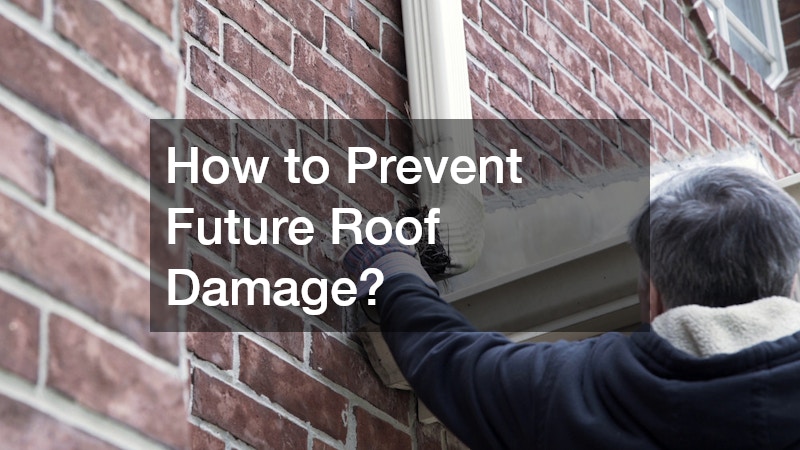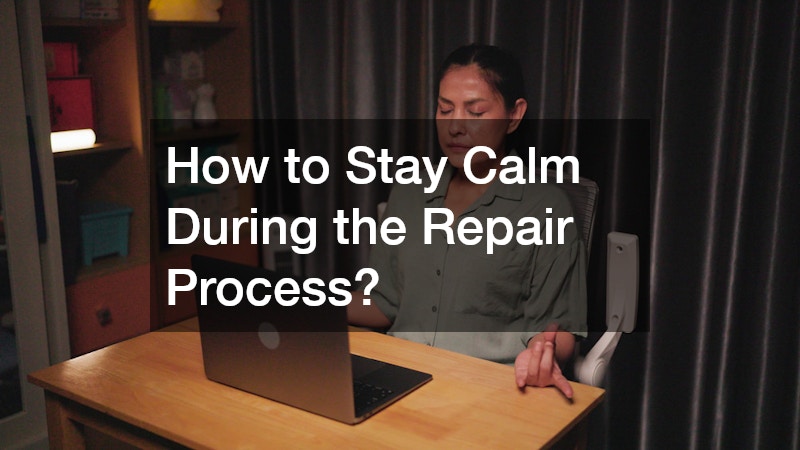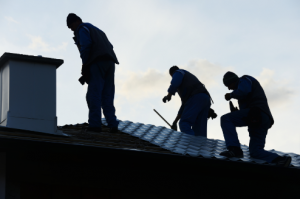How to Handle a Rotten Roof Without Losing Your Mind—or Your Wallet
Discovering you have a rotten roof is one of those homeowner nightmares that can quickly spiral into anxiety, unexpected expenses, and total overwhelm. Between the looming costs, the time it takes to get it fixed, and the fear of structural damage, it’s tempting to ignore the problem and hope for the best. But putting off a solution will only make things worse. Whether your roof is actively leaking, sagging in places, or giving off that musty smell of mildew, taking action is key.
Fortunately, there are ways to deal with a rotten roof without maxing out your credit card or losing sleep. This guide walks you through everything from spotting early warning signs to hiring qualified roofers and choosing between repair and replacement. We’ll talk about how to work with your insurance, when to trust a local roofing company, and how to balance budget and safety. Along the way, we’ll also explore how services like gutter services and even home restoration play a role in solving and preventing roof problems.
Let’s dive into how to handle a rotten roof with as little stress—and cost—as possible.
What Are the Signs of a Rotting Roof?

Visible Damage
A rotten roof doesn’t always start with a dramatic leak. Often, the first signs are subtle: curling shingles, discoloration, soft spots, or sagging areas. If you see any of these symptoms, your roof is likely compromised, and it’s time to contact a residential roofing contractor or a local roofer for a professional evaluation.
Leaks and Water Stains
Water stains on ceilings or walls are red flags. If water is getting in, rot may already be present. Prompt roofing repair can sometimes prevent the need for a total roof replacement, especially if the issue is isolated. Don’t forget to inspect attics for signs of moisture.
Mold and Mildew Growth
A rotten roof often leads to moisture retention, which encourages mold and mildew. Not only is this bad for your home’s structure, but it also poses a health risk. If mold is spreading, contact roofers immediately—you may also need home restoration experts if the interior is affected.
How Much Does Roof Replacement Cost?
Factors Affecting Cost
Several variables influence roofing costs: materials (such as asphalt, tile, or metal roofing), roof pitch, square footage, labor costs, and even geographic location. Working with a local roofing company can often help reduce some of these costs.
Average Cost Breakdowns
On average, a standard roof replacement might cost anywhere from $5,000 to $15,000. Metal roofing or large homes can raise the cost significantly. Hiring reputable roofing companies ensures you get a fair estimate and professional results.
Financing Options
If your rotten roof needs a full replacement, check with your roofing contractor about financing. Many companies offer payment plans or work with third-party lenders. Also consider home equity loans, personal loans, or insurance claims to help manage costs.
Can a Rotten Roof Be Repaired or Does It Need Replacement?
Assessing the Damage
Before assuming the worst, have a residential roofing contractor assess the situation. Some roof issues look bad but are repairable. Timely intervention can mean the difference between a patch job and a full tear-off.
Partial vs. Full Replacement
If the rot is isolated to one area, partial replacement might be enough. This approach is cost-effective but only viable if the rest of the roof is structurally sound. Local roofers can advise on whether this is a realistic option.
Professional Inspection Benefits
Hiring a professional for a roof inspection ensures nothing is overlooked. You’ll also get documentation to help with any insurance claims or financing needs. A seasoned roofing contractor will give honest advice and identify whether a manual J calculation service is needed if there are broader concerns about your home’s insulation and HVAC efficiency.
What Should I Do Immediately After Discovering Damage?

Temporarily Covering the Roof
Your first step is to limit further damage. Use tarps, roofing tape, or plastic sheeting to cover compromised areas. This won’t fix the problem, but it will buy you time until your local roofer can make permanent repairs.
Documenting Damage
Take clear photos of all visible damage, both inside and outside. Include timestamps if possible. This documentation will support your insurance claim and make the process of working with a roofing repair service smoother.
Contacting Professionals
Reach out to a roofing contractor as soon as possible. Many offer emergency services or quick turnaround assessments. Make sure the company is licensed and experienced in handling rotten roof cases.
How to Choose a Reliable Roofing Contractor?
Research and Reviews
Start by searching for local roofing companies with solid reviews. Ask neighbors or check sites like the Better Business Bureau for additional confidence. A reputable residential roofing contractor should have a strong track record in your community. Look for consistency in feedback—if multiple homeowners praise a contractor’s punctuality, professionalism, or pricing, that’s a good sign. Social media groups and home improvement forums can also be great sources of unfiltered opinions. Don’t forget to check how long they’ve been in business, too. A company that’s been serving the area for decades likely knows the ins and outs of local regulations and weather patterns.
Checking Credentials
Verify that your chosen contractor has proper licenses, insurance, and warranties. This is especially important if they will be coordinating with your home restoration or insurance company. Don’t hesitate to ask for documentation—trustworthy roofers expect it. Make sure their liability insurance and workers’ comp are up to date so you aren’t left footing the bill in case of an accident. If you’re considering specialty work like metal roofing or integrated gutter services, ask whether they’re certified or trained for those materials. Also, check whether they offer workmanship warranties, not just manufacturer warranties, so you’re protected on both fronts.
Obtaining Multiple Quotes
Never settle for the first estimate. Contact at least three roofers for quotes. Compare not just price, but timeline, materials, and level of service. Some may bundle gutter services or other helpful extras into the project. When you get quotes, ask for itemized breakdowns so you can spot cost discrepancies or areas where one contractor might be cutting corners. Be wary of extremely low bids—they often signal inferior materials or unskilled labor. Pay attention to how responsive and thorough they are during the quoting process. A roofing contractor who communicates clearly at this stage is more likely to be reliable throughout the job.
What Insurance Coverage Is Available for Roof Damage?
Understanding Your Policy
Before calling your provider, read your homeowner’s insurance policy carefully. Understand the difference between wear-and-tear exclusions and sudden damage claims. Some policies only cover damage caused by specific events. Make note of deductibles and coverage limits, especially for roofing repair. If your area is prone to storms or flooding, you may need additional riders or endorsements. Also check whether your policy includes code upgrade coverage—this pays for necessary changes to bring older homes up to modern building standards. Understanding these details can prevent surprises during the claims process, especially when dealing with a rotten roof situation.
Filing a Claim
When filing a claim for a rotten roof, be thorough. Provide images, dates, contractor assessments, and receipts. Work closely with both your insurance agent and roofing contractor to make sure your claim is fully supported. Keep a log of all conversations and emails, and ask your contractor to include clear documentation of the cause and extent of the damage. It’s helpful if they’re experienced with insurance claims and can advocate on your behalf. Timing is crucial—some providers have short windows for submitting documentation, especially after major weather events. Prompt action ensures you don’t miss out on coverage you’re entitled to.
What Is Covered?
Policies vary, but many cover roof damage caused by storms, fallen trees, or accidental damage. Routine wear and neglect are often excluded, so staying on top of maintenance (including regular gutter services) can help avoid claim denials. Some insurers require proof that you’ve done your part in maintaining your home. Keep records of inspections and roof cleaning services, especially if you’ve used a professional roofing contractor. Coverage might also vary depending on the roofing material—some policies handle metal roofing differently from asphalt shingles due to durability differences. If you’re unsure what qualifies, call your insurer before any work begins.
How to Prevent Future Roof Damage?

Regular Maintenance Schedule
A routine maintenance schedule is your first line of defense. Schedule roof inspections at least once a year and after major storms. Your roofing contractor can identify problem areas before they become disasters.
Cleaning Gutters and Downspouts
Blocked gutters cause water to back up, which can rot your roof from the edges inward. Regular gutter services are a low-cost way to extend the life of your roof.
Choosing the Right Materials
Invest in high-quality, rot-resistant materials. Metal roofing, for example, is highly durable and less susceptible to water damage. Talk to local roofers about the best options for your home’s location and structure.
Are DIY Repairs Worth It?
Skills and Tools Required
Fixing a rotten roof is not a beginner’s project. It requires specialized tools, knowledge of building codes, and safety gear. If you’re not experienced, leave it to professional roofing companies. Even small repairs can go wrong fast—misjudging a flashing angle or failing to secure underlayment can lead to leaks or rot returning. DIYers often underestimate how involved roof work is, especially when coordinating tasks like chimney sealing, ventilation fixes, or rerouting gutter systems. If you’re committed to tackling it yourself, at least consult a local roofing company to assess the job first and offer guidance.
Safety Considerations
Roof work can be dangerous. Falling off a roof or mishandling tools can lead to serious injuries. Hiring a local roofing company is a safer and often more cost-effective choice in the long run. Professional crews are trained in fall prevention, weather safety, and how to handle steep slopes. They also carry insurance in case of accidents—something you won’t have as a DIYer. Safety extends beyond you, too. Mistakes in structural repairs can compromise your home’s stability, affect bathroom remodeling plans, or even put family members at risk. It’s often better to let certified roofers take the lead.
Potential Cost Savings
While DIY might save money upfront, poor repairs can result in more damage later. In some cases, incorrect fixes can void your insurance coverage or warranties. You’re better off working with qualified roofers who know what they’re doing. Many local roofing companies offer flexible payment options or limited-scope repairs to help you stay within budget. They can also spot related problems—like moisture in attic insulation or HVAC inefficiencies—that you might miss. Trying to fix a rotten roof without the right knowledge could ultimately cost you more, especially if the damage spreads to walls, ceilings, or foundational elements.
What Are Common Myths About Roof Damage?
Myths About Maintenance
One common myth is that roofs don’t need attention until they leak. In reality, preventative maintenance from a roofing repair specialist can extend a roof’s life by years.
Misconceptions About Roof Lifespans
Many homeowners think roofs last forever. In truth, even the best roof has a shelf life. Regular checkups from a residential roofing contractor will help track when your roof is nearing its end.
Beliefs About DIY Repairs
Another myth is that DIY saves you tons of money. As discussed, this often backfires. Trusted roofing companies can often do the job faster, safer, and with better long-term results.
How to Stay Calm During the Repair Process?

Setting a Realistic Timeline
Repairs take time. Weather delays, material backorders, or scheduling conflicts with your roofing contractor are all normal. Build a buffer into your expectations and stay in communication with your local roofer.
Staying Organized
Create a folder or digital record of all communications, receipts, and appointments. This will help streamline insurance claims and keep your roofing repair project on track.
Seeking Support
Dealing with a rotten roof is stressful. Don’t hesitate to lean on friends, family, or even neighbors who’ve gone through similar issues. You may also want to consult a home restoration specialist if other parts of your home have been affected.
Conclusion
Managing a rotten roof may seem like an overwhelming ordeal, but with a little planning and the right support, it’s completely doable. Start by recognizing the early signs—sagging, leaks, or mildew—and act quickly to prevent further damage. Whether your path involves full replacement or a simple patch job, make sure you consult experienced roofers who can provide honest feedback.
Don’t go it alone. Use local roofing companies with solid reviews and credentials, and always get multiple quotes. If insurance is part of the equation, document everything and follow the claim process carefully. You may also need to tap into home restoration or gutter services depending on the extent of the issue.
Most importantly, try not to stress. Rotten roofs are fixable, and you don’t have to empty your savings account to get through it. With good planning, reliable help, and a focus on prevention, you can get your roof back in shape and your peace of mind restored.








